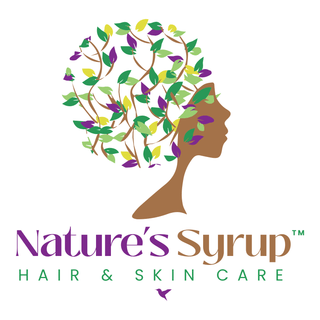Standing in a small braid salon in a village in Ghana, I was surrounded by joy, laughter, and the sound of women’s hands moving quickly through hair. Braiding isn’t just about style, it’s about connection, culture, and protection. Protective hairstyles like braids, twists, and cornrows have always been more than fashion; they are a sacred practice that honors our roots while caring for our hair.
But here’s the thing: braids aren’t “set it and forget it.” The way you prepare for them, care for them, and maintain them makes all the difference in the health of your natural hair. Let’s dive into how to get the most out of your protective style.
Step One: Start With a Fresh Canvas
Before you sit in the chair, preparation is key. Think of braids as an investment, you wouldn’t put a beautiful piece of art in a dusty frame, right?
Cleanse thoroughly: Use a gentle, sulfate-free shampoo to remove buildup.
Moisturize deeply: Apply a high-quality leave-in conditioner to ensure your strands are hydrated. (Our Anti-Breakage Leave-In Conditioner is a favorite for this.)
Seal it in: Use a lightweight oil, like our Jasmine Rose Oil Leave-In, to lock in moisture before braiding begins.
Caring for Your Scalp While Braided
Your scalp is the foundation of healthy hair, and it still needs attention when your hair is braided.
Moisturize your scalp: Apply a nourishing oil 2–3 times a week to keep it hydrated and prevent dryness or flakiness.
Massage lightly: Stimulate circulation with gentle fingertip massages to promote growth.
Don’t overload: A little goes a long way, too much product can lead to buildup and itchiness.
Can You Get Braids Wet? Yes!
-
Many people avoid water when their hair is braided, but water is life for your curls, even in protective styles.
-
Mist regularly: Use a spray bottle or pump to lightly spritz your hair with water every couple of days.
-
Add leave-in conditioner: Pair water with a leave-in like our Anti-Breakage Leave-In Conditioner to refresh, hydrate, and keep braids looking neat.
-
Dry properly: Pat gently with a towel or use a blow dryer on cool air to avoid mildew or odor.
Upkeep and Longevity
Protective styles are just that, protective. But they’re not meant to be permanent.
-
Limit style time: Keep braids in for 6–8 weeks max to prevent tension and breakage.
-
Wrap it up: Sleep with a satin or silk scarf/bonnet to reduce friction and frizz.
-
Listen to your hair: If your scalp feels sore, dry, or irritated, adjust your routine.
Why Protective Styles Matter
Protective styling is more than convenience, it’s cultural, practical, and spiritual. It reduces manipulation, prevents breakage, and gives natural hair the chance to thrive. But remember: your hair is still alive under those braids. Treat it with care, nourish it often, and let your style be both beautiful and healthy.
Common Questions About Protective Styles
How do I prepare my hair for braids?
Always start with clean, conditioned, and moisturized hair.
What’s the best way to keep my scalp from itching while in braids?
Use lightweight scalp oils, massage gently, and avoid product overload.
Can I wash my braids?
Yes! Use diluted shampoo or cleansing spray, followed by leave-in conditioner.
How long should I keep braids in?
6–8 weeks is ideal, any longer can lead to breakage or thinning edges.
Final Thoughts
That moment in Ghana reminded me: braiding is joy, braiding is culture, and braiding is care. Whether you’re rocking knotless braids, twists, or cornrows, remember that protective styling is a partnership between your stylist’s hands and your commitment to hair health. With the right prep, products, and upkeep, your natural hair will thank you.
